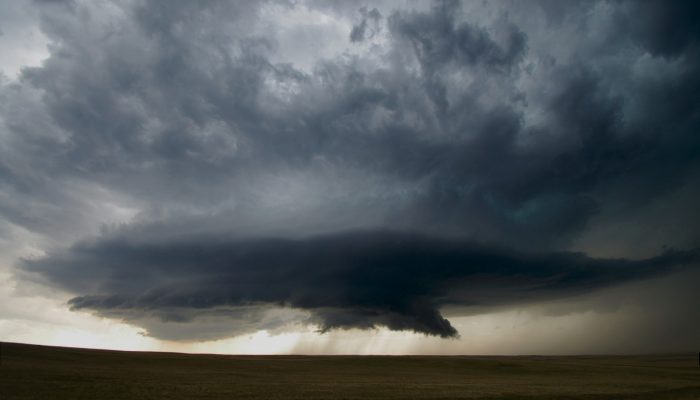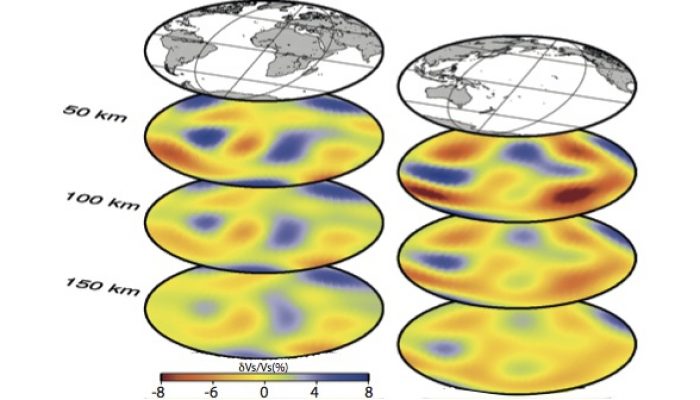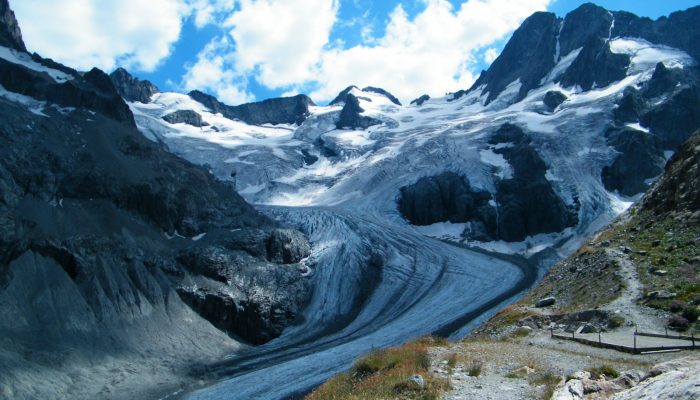Ice cores are important tools for investigating past climate as they are effectively a continuous record of snowfall, which preserves historical information about climate conditions and atmospheric gas composition. In this new “For Dummies” post, we discuss the history and importance of ice-core science, and look at the way we can use ice core chemistry to reconstruct past climate. Ice sheets, arc ...[Read More]
If you didn't find what you was looking for try searching again.
GeoLog
Imaggeo on Mondays: A look inside a thunderstorm
This week’s contribution to Imaggeo on Mondays is a photograph of a mesocyclone – and its rotating wall cloud – photographed by Mareike Schuster, an atmospheric scientist from Freie Universität Berlin, Germany. The picture was taken in June 2012 near Cheyenne, Wyoming in the United States during a field campaign, ROTATE, led by the Center for Severe Weather Research, based in Boulder, Colora ...[Read More]
GeoLog
Imaggeo on Mondays: Why does a Norwegian glacier look blue?
This picture shows the outlet glacier Engabreen running down from the plateau of Svartisen in Norway. Svartisen ice cap comprises two glacier systems of which the Vestre (western) Svartisen is Norway’s second largest glacier. Located right at the polar circle, Svartisen covers a total of 369 km² of the Nordland region. These coastal mountains accumulate a snowpack of 5-7 m depth through the winter ...[Read More]
GeoLog
Imaggeo on Mondays: The odd ‘living’ rocks
Microbialites – structures which result from the interaction between microbes and sediments – have existed in the rock record since 3700 Ma ago until the present day. The presence of microbes in environments where mineral precipitation is prevalent, usually derives in the development of such chemical sedimentary structures. This can take place in marine, non-marine, and subterranean environm ...[Read More]
Seismology
Paper of the Month — Seismic anisotropy
“SEISMIC ANISOTROPY AND MANTLE DEFORMATION: WHAT HAVE WE LEARNED FROM SHEAR WAVE SPLITTING?” (M. K. SAVAGE, 1999) commented by Dr. Jessica Johnson Jessica Johnson from the University of East Anglia (UK) is our guest author of the PoM blog series of this month! She has chosen to comment on the paper “Seismic Anisotropy and mantle deformation: what have we learned from shear wave ...[Read More]
Cryospheric Sciences
Water Masses “For Dummies”
Polar surface water, circumpolar deep water, dense shelf water, North Atlantic deep water, Antarctic bottom water… These names pop in most discussions about the ice-ocean interaction and how this will change in a warming climate, but what do they refer to? In our second “For Dummies” article, we shall give you a brief introduction to the concept of “water mass”, explain how to differentiate water ...[Read More]
Seismology
Paper of the Month — Mapping the upper mantle
“MAPPING THE UPPER MANTLE: THREE-DIMENSIONAL MODELING OF EARTH STRUCTURE BY INVERSION OF SEISMIC WAVEFORMS” (Woodhouse & Dziewonski,1984) commented by Andrew Valentine. Here we are again with our Paper of the Month (PoM) series! Our guest writer is Andrew Valentine, who has chosen to comment one of the landmark papers in global seismic imaging: “Mapping the upper mantle: Thre ...[Read More]
GeoLog
Imaggeo on Mondays: Glacier de la Pilatte
The relentless retreat of glaciers, globally, is widely studied and reported. The causes for the loss of these precious landforms are complex and the dynamics which govern them difficult to unravel. So are the consequences and impacts of reduced glacial extent atop the world’s high peaks, as Alexis Merlaud, explains in this week’s edition of Imaggeo on Mondays. This picture was taken on 20 August ...[Read More]
GeoLog
Who do you think most deserves the title of the Mother of Geology?
Much ink is spilled hailing the work of the early fathers of geology – and rightly so! James Hutton is the mind behind the theory of uniformitarianism, which underpins almost every aspect of geology and argues that processes operating at present operated in the same manner over geological time, while Sir Charles Lyell furthered the idea of geological time. William Smith, the coal miner and canal b ...[Read More]
GeoSphere
Cruisin’ for Deep Sea Vents
My friend John Jamieson, who is now a prof in the geology department at Memorial University in Newfoundland and Canada Research Chair in marine geology and is also a former GeoSphere guest poster is currently on a research cruise near Fiji. John researches deep sea vents, aka. black smokers/seafloor massive sulphide deposits that are exhaling super heated water at tectonic plate boundaries around ...[Read More]








